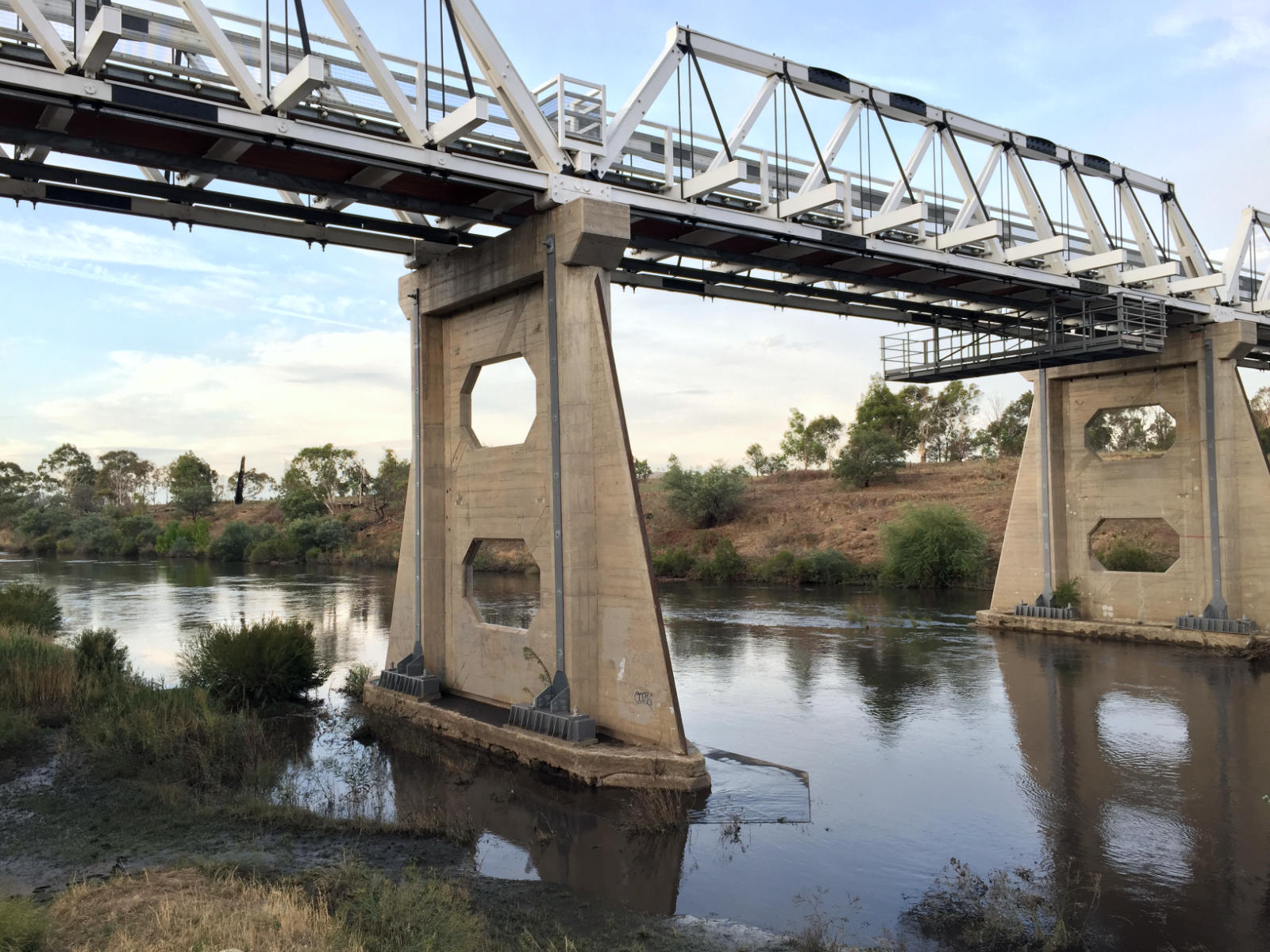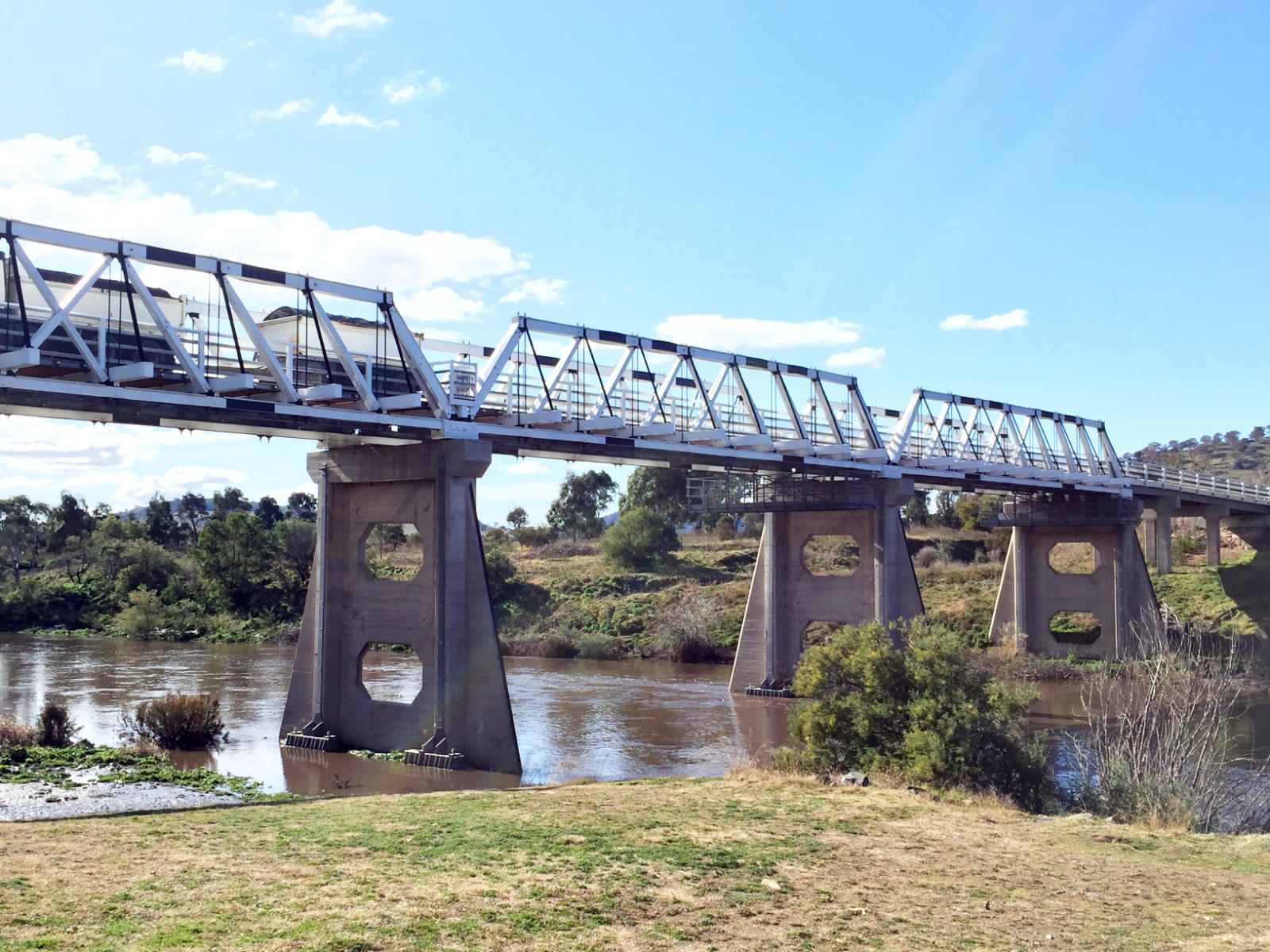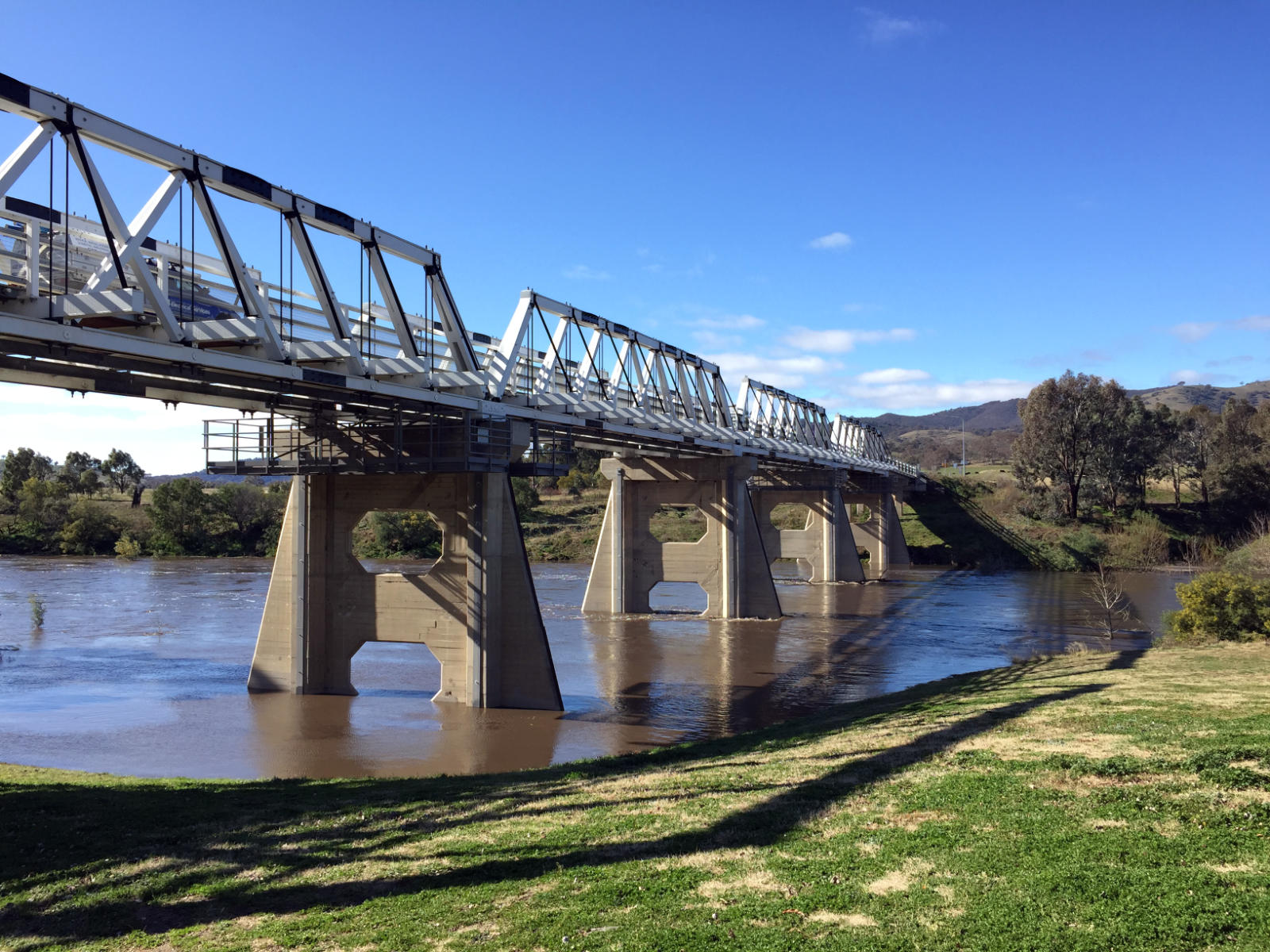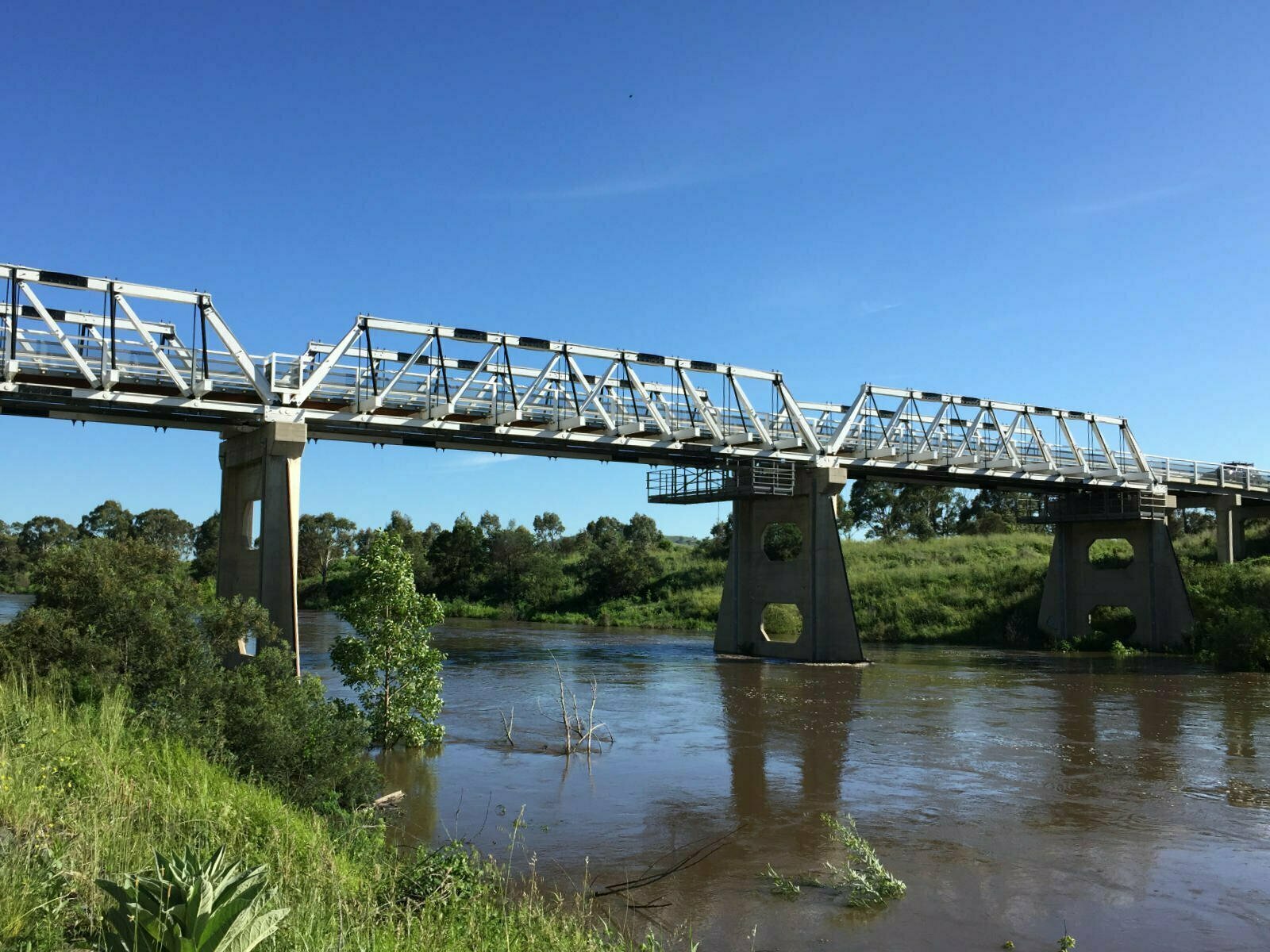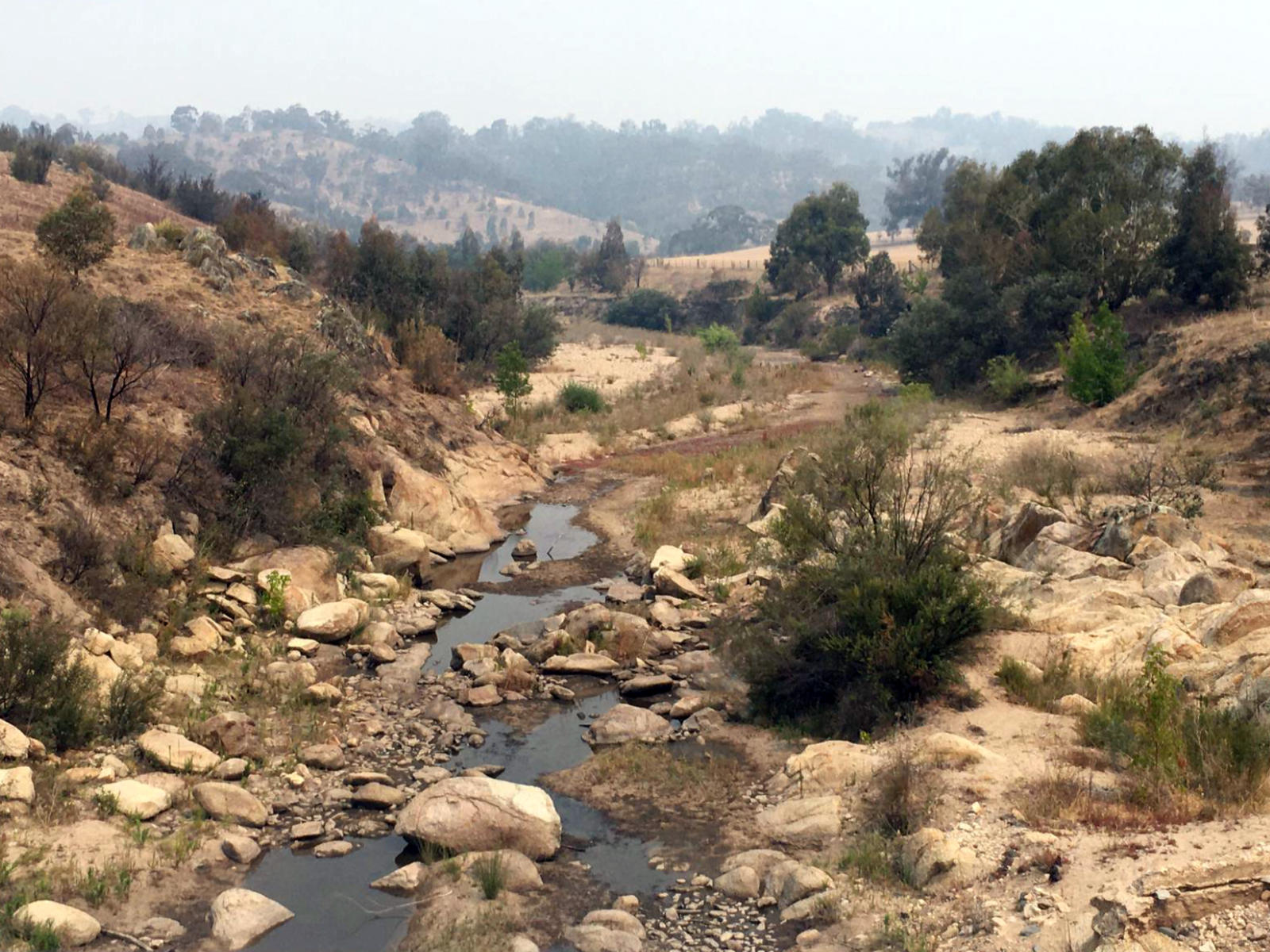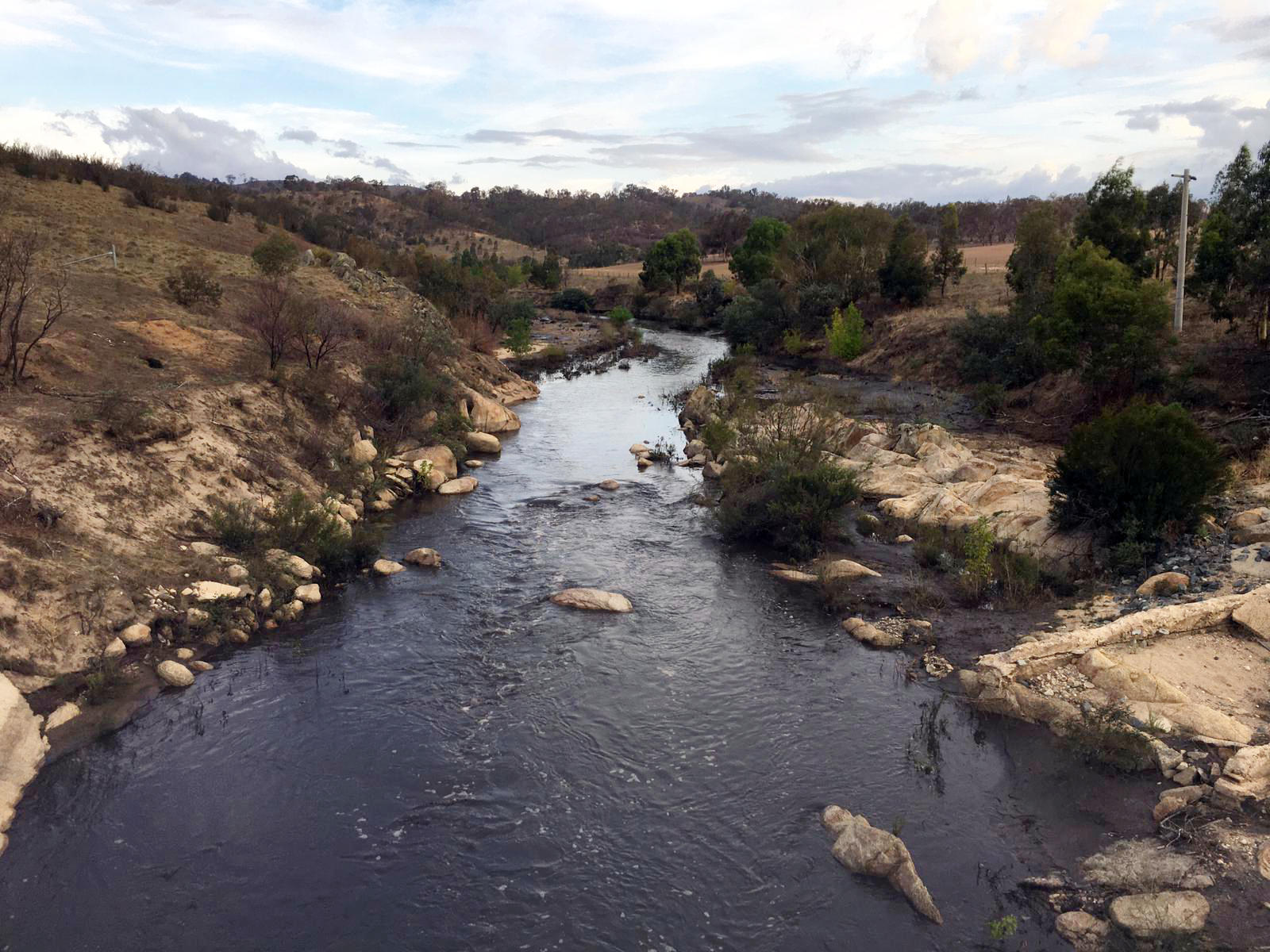To the residents of Canberra,
I am writing this letter to you as a record of what has been an unusual and remarkable year for me and the people of the region. I have seen a lot in my life, but this last year or so is certainly one for the books. Although I stretch for thousands of kilometres from the mountains up near Cooma and out to central NSW, I am telling this story from a quiet spot to the south of Canberra near Tharwa Bridge, in the shadow of Mt Tennant and with a view to the Lanyon Homestead.
You may not recall, but like you, I started December 2019 looking up to the grand old Brindabellas covered in snow. It was a cold one to start the summer indeed, but a chill that was soon to be replaced by oppressive heat, gusting warm winds and bushfire.
Three consecutive hot and dry years had baked the country dry.
The warmer waters of the Indian and Pacific Oceans had deserted us, delivering hot and dry conditions across the eastern parts of Australia. One hundred per cent of NSW was drought-declared, and in the middle of December, I finally stopped flowing. As we geared towards Christmas, water was trucked into the township of Tharwa, and the cod, yellow-belly and crayfish which rely on my water, took refuge in the remaining stagnant pools to await the return of flowing water.
While we were experiencing a chilly start to summer, fires in other parts of the country had been burning for months. The smoke blanketing Sydney in early December 2019 and the fires in other parts were a warning of things to come. By December’s end, I watched you all attempt to continue living and working amongst the poorest air quality in the world. Evening after evening, winds from the coast brought a wave of thick dark cloud that shrouded the city, often settling over the city like a Canberra winter fog. I learned that the fires down the coast had wreaked havoc. Suddenly, Canberra was a hive of activity as locals scrambled to do whatever they could to help – food, clothing, fuel, generators, consumables, toilet paper (oddly enough, perhaps the item of the year for 2020). Kind hearts opened up as they often do, offering emergency accommodation, a shower, a cup of tea. Funny how putting the kettle on is often the first step to solving a problem.
Murrumbidgee River at Tharwa Sandwash



With smoke in the air and not a hint of rain in sight, save for the odd storm, it was apparent that the summer was likely going to be a write-off. Christmas and New Years came and went. The usual end-of-year break for the city where respite, recreation and recovery are the order of the day, was not going to happen this year. The smoke from Summernats was insignificant against a prolonged backdrop of haze. Board games and indoor activities were in high demand, and the walking tracks and BBQ areas that adorn my banks were empty. The summer of 2019-20 was a lonely one by the river, but it was the January to come which would be memorable for all the wrong reasons.
January 2020 was not a pleasant one for me or the region, but one week in January was a real shocker. I am of course referring to the week from Monday the 20th to Monday the 27th. On 20th January 2020, I watched as a powerful storm rolled in from the north-west and dropped a belting of hail over the city. For those watching from a distance, it was spectacular, for those underneath, terrifying. Trees, cars, homes and buildings were pummeled by large hail which rendered many cars in the city useless. Out near the industrial estate of Hume, a car graveyard with wrecks numbering in the thousands was established to house the remains from 15-minutes of carnage. This was just the start to the week. Two days later, the fires which had hit other parts of the country were upon the city as bushland near the Canberra Airport and Oaks Estate went up in flames. Thankfully, this fire did not cause too much damage, but its speed and ferocity were duly noted.
By nightfall on Monday the 27th, the Orroral Valley bushfire would be just starting to consume the Namadgi National Park. For me, this was the saddest part of the year as I watched 80% of the national park and the animals within it be destroyed. My friends and neighbours in the Orroral Valley, Tharwa, Gordon, Banks and Condor stood on alert as the beautiful mountains which make this part of Canberra magical went up in flames. I guess not surprisingly, people’s fascination with fire saw people flock to the southern suburbs for what I would learn is called ‘disaster tourism.’ I imagine for some it was perhaps their first and only trip to the southern suburbs.
The Orroral Valley fire would soon cross the NSW border to become the Clear Range fire. It crossed my banks and impacted the towns of Bredbo, Michelago and surrounding areas. My residual pools of water – some of which are much deeper than you think – had now become crucial in the effort to control the fires. I was only too glad for firefighting helicopters to replenish their tanks from the remaining pools in my riverbed if it meant protecting the park, the animals, people and property. It was not the first time I’ve seen fire-fighting aircraft flying so low over me and it won’t be the last. Unfortunately, it was also at this time that we learned of the accident of an aerial tanker in the snowy mountains, with the loss of all three crew on board. I have witnessed a lot of bravery in my time, but the firefighters and support crew who battled this season were nothing short of heroic in their efforts. I have the utmost respect for all involved and hold in high regard those who came from abroad to help us with our efforts, and those who made the ultimate sacrifice.
It would be the 27th of February 2020 before the Orroral Valley fire was declared out, but by now, the city’s eyes had turned to something else emerging across the world. While Canberra had been battling smoke, fire and hail over summer, a pandemic was unfolding on a scale I had not seen for years. While the country was preoccupied with battling fires, the first case of what we now call Covid-19 had reached Australia on 25 January 2020 and would change our lives forever.
The Murrumbidgee at Point Hut
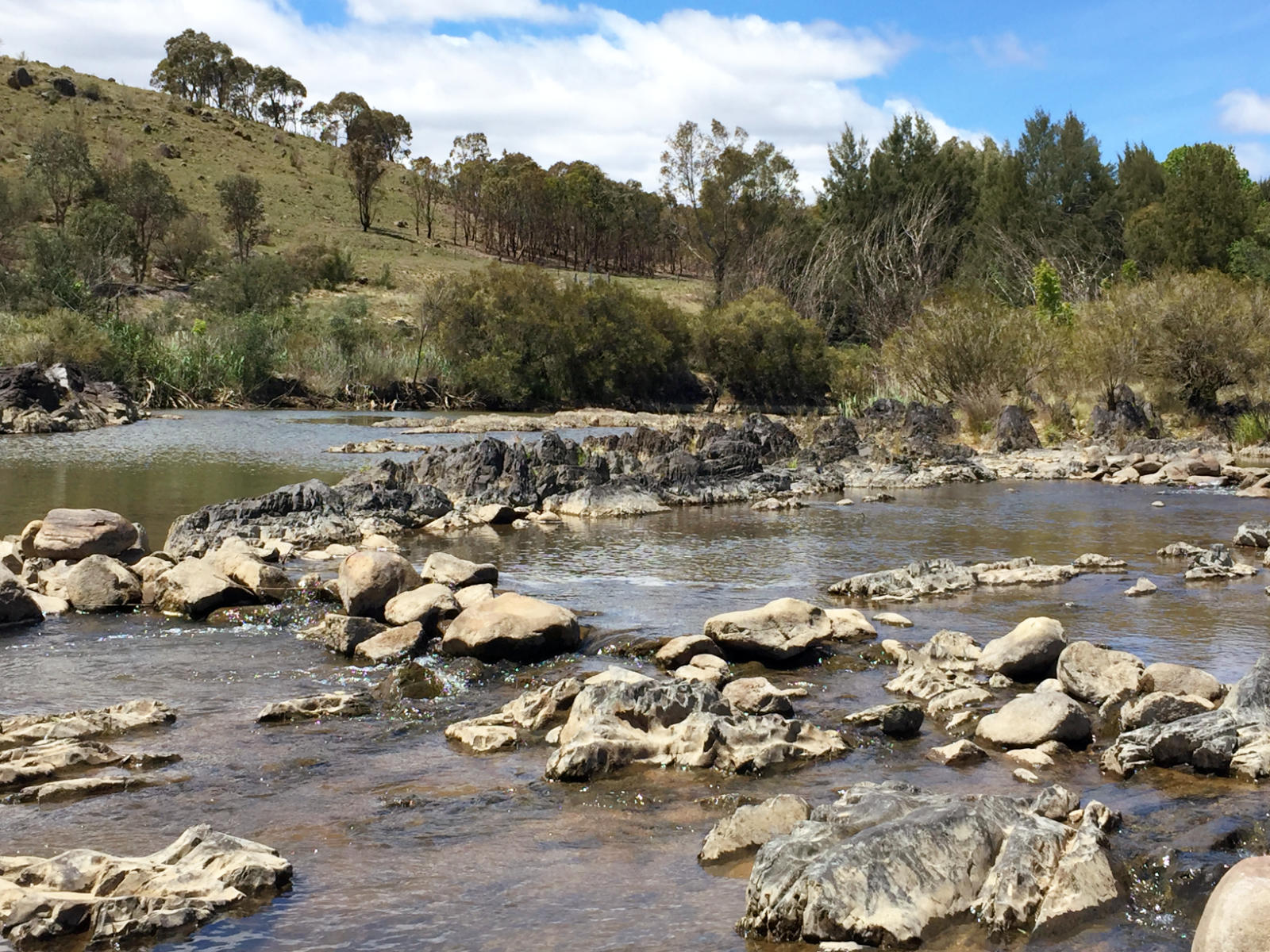

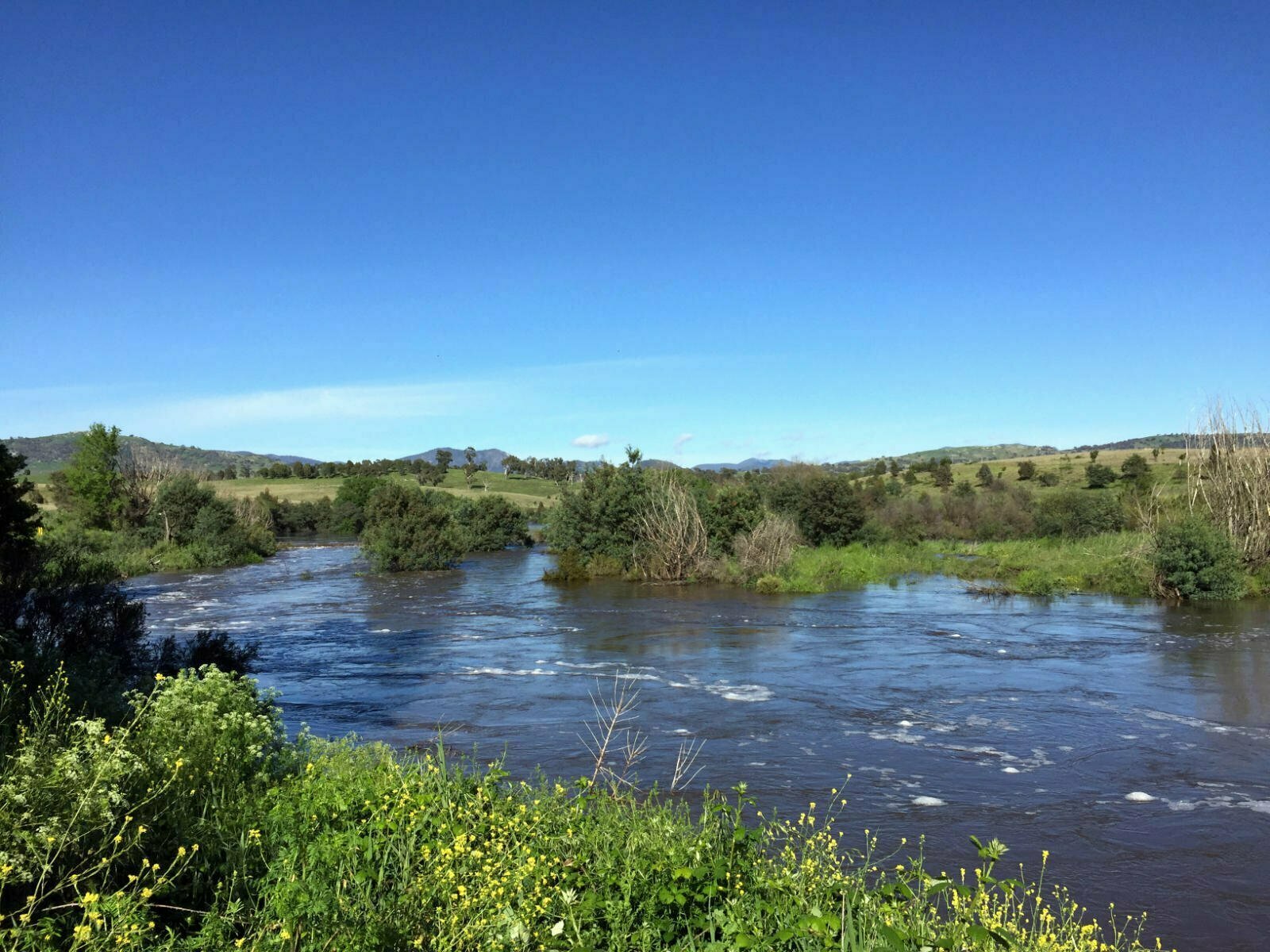
I like to listen to people chatting by my banks and have done so for thousands of years.
In March 2020, I heard conversations about this mysterious virus as people contemplated what it may mean for them. For some, it was prospects of working from home, others working less, others losing their jobs altogether. Home-schooling was on the cards and oddly enough, rumours of a toilet paper shortage during the coastal fires had now manifested in an immediate need for everyone to stock up on several months worth of this essential item. Panic buying encompassed a range of goods, especially pasta, and I suspect many children in the valley ate re-heated spag-bol for the first 6-weeks of lock-down. Thankfully, supply chains were replenished. But in the conversations by my waters, there was talk of the social restrictions to come which was at the forefront of people’s minds. When would it happen and for how long? Weeks? Months? Longer? And a most important question, were they really going to close the bottle-o?
March 12 was the date the virus came to the capital and by the end of the month, restrictions were in place. This was now the second time Canberran’s were forced inside within a few months, except this time, a benefit was that the air was clean. People were restricted to their houses but unlike summer, could still sit out the back, tend the yard and run the evaporative cooler without filling their homes and lungs with smoke. A small but important win.
They reckon walking next to water is good for your mental health. I don’t read much, but I reckon there is something in that. Why do people like walking, camping and picnicking near rivers, lakes and waterfalls? There must be some truth to it, because as soon as people were told they can’t go out, the lakes and rivers of the Canberra region were chock-a-block with families and people out walking, running and riding. The walking tracks by my banks, empty over Christmas, were now teeming with people getting out and about to escape the indoors, the 24-hour news-cycle and the virus-talk, to simply enjoy the fresh air. For me, it was a tremendous sight to see people enjoying and re-connecting to the rivers again. I admit though that I did chuckle to myself as I watched walkers on my narrow tracks politely attempt exaggerated social distancing to anyone coming the other way. It was as though each party had invisible jousting sticks, about 1.5m long by my estimate.
February also saw the coming of the first decent rain for a while and boy did the countryside need it. I will never complain of the rain coming down, but the first rains after a fire are not pleasant. I was now getting a dose of what Canberra had been breathing in all summer. My waters turned as black as Guinness, with ash and burnt timber washing into my body and filling my throat and lungs. I’m not sure if it is possible to have varying shades of black, but in February 2020, the Gudgenby River just upstream of Tharwa turned a shade of black I’ll never forget. It is not a colour you want to see a river turn too often. While it was not pleasant, the return of running water was just what I needed after a long hot and dry spell and thankfully it was a sign of things to come.
Remember earlier when I mentioned the Indian and Pacific Oceans? Well, they had now brought us warmer waters in 2020, which meant a wetter side of life, and I am eternally grateful for it. As I’ve been gently sitting here and watching the drought take hold in recent years, and now a global pandemic unfold, I am grateful these oceans have brought us some rain because I’m not sure we could have taken fires, another year of drought and a virus. One crisis at a time, please!
Water has again replenished my bed and banks and those of my friends and family – the rivers of the Cotter, Queanbeyan, Molonglo, Shoalhaven, Lachlan, Murray, Clyde, Moruya and so many more. Farm dams that were empty are now full. Sheep, cattle, kangaroos and other animals are fat and healthy. Major dams that were 40% and below, are now 80% and above. Canberra’s storages alone are nearly all at 100%. The food bowls of the region will be at full-tilt this year and the risks will now be too much rain. With the rain, the hills turned purple with Patterson’s curse and this I think is no better reminder of just how widespread weeds are in our country.
With the broader countryside green and wet, flooding is a real prospect this year and people will soon see that part of my nature is being as dangerous as I am beautiful. Although many of my interactions with people are often playful and enjoyable, I know that I am dangerous. Unfortunately, I have taken lives in the past and did so again in August and December 2020. Like all rivers, I encourage people to approach with caution and to respect the conditions, especially when I am in flood.
From dry bed to a river of stout – the Murrumbidgee at Tharwa Bridge
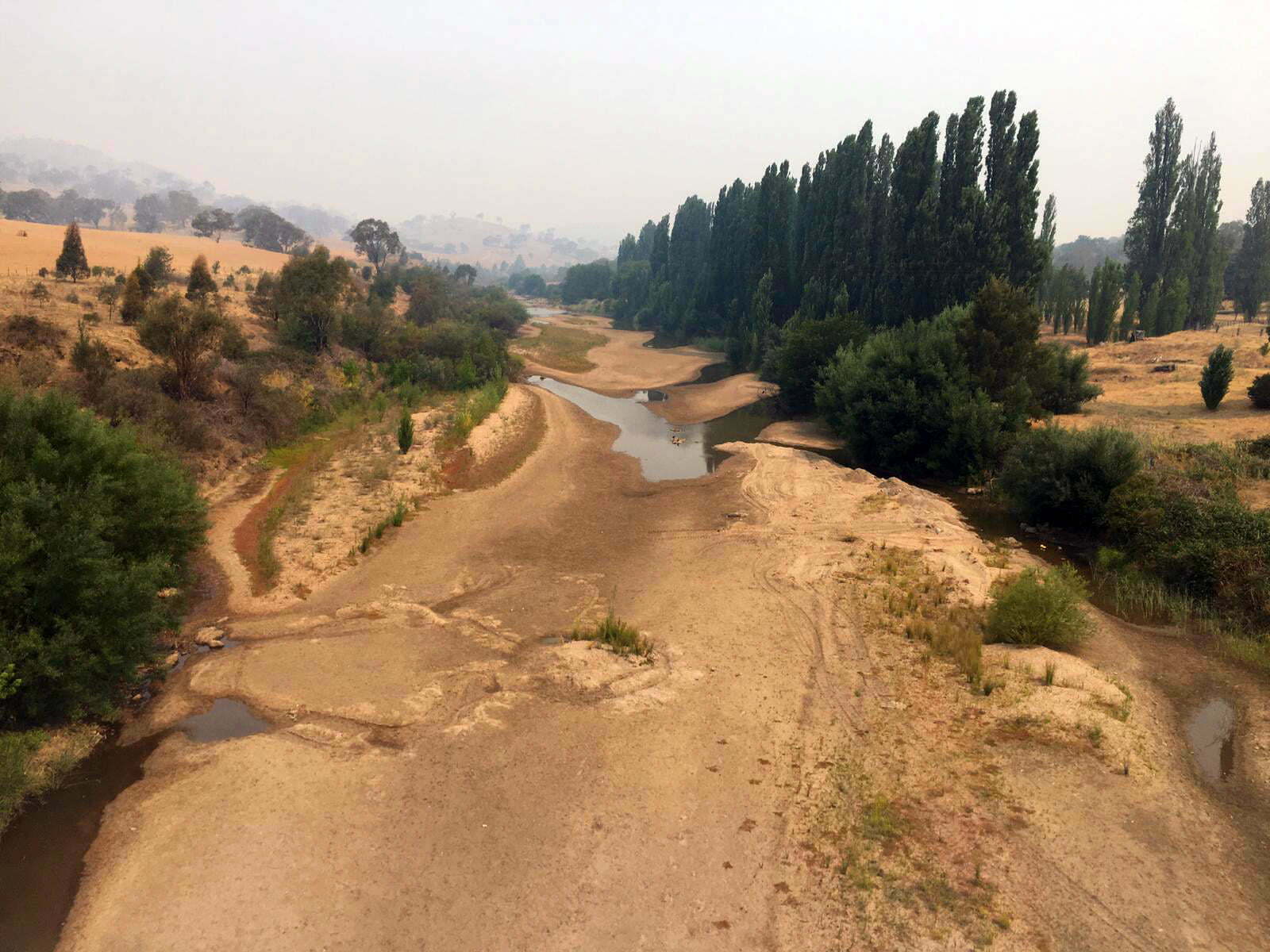
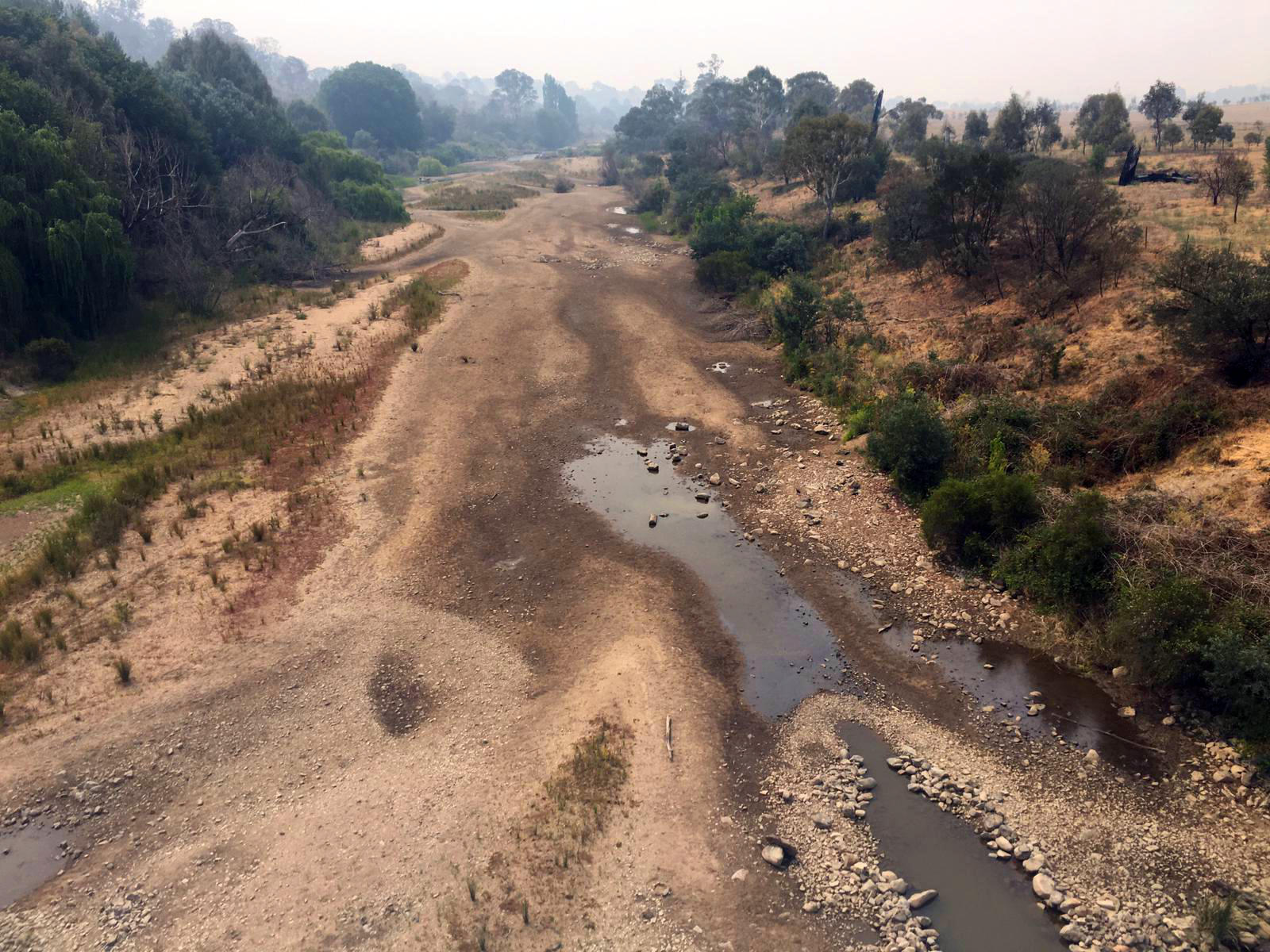
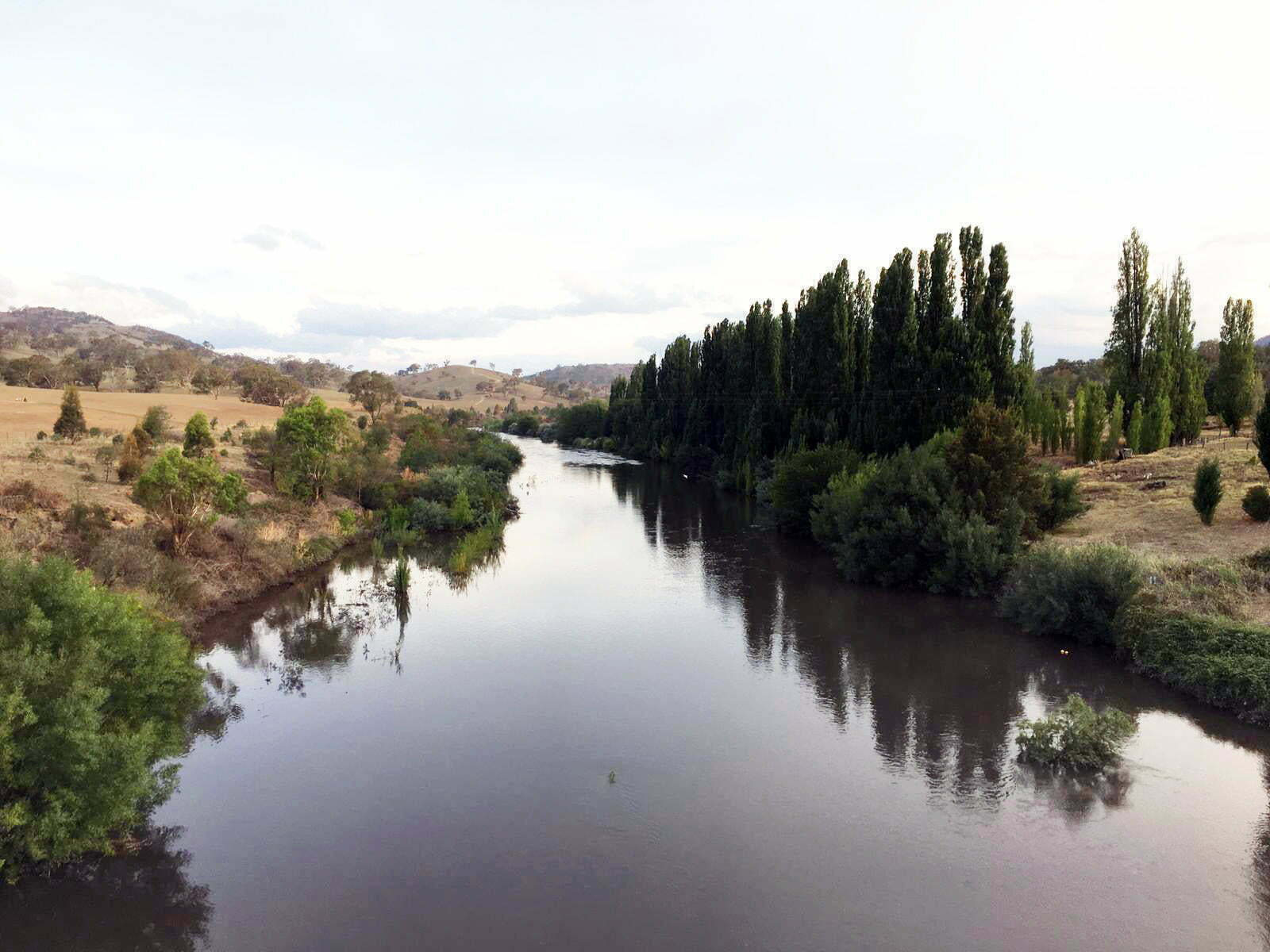

I have seen a lot in my life. For thousands of years, I watched as the First People of this great land lived as one with the landscape. For millennia, great movements of people crossed my waters and into the surrounding hills to feast on the Bogong moths congregating there. I watched as singing, dancing and important ceremonies were held on the hills around Canberra including on Darwa, now Mt Tennant, with the original name now adorning the town close by – Tharwa. I witnessed interactions with the first Europeans to settle in the area from the 1820s with my very body becoming the boundary for the newly established colony. Disease and displacement hurt the First People, but their connection to me is still here and remains strong. I watched as the first European generations toiled in a difficult land and then began to thrive – although I did flood them out a few times. The world wars arrived and saw locals head off to fight. Not all would return. Some of those who did would take up settler blocks, where they again went to battle, this time with weeds, rabbits, and their own demons of war. For the second World War, I watched with intrigue in the 1940s as the nearby suburbs we now call Bonython and Isabella Plains became a practice bombing range for the RAAF. I am thankful they were not using live ordinance and also thankful they decided against a live bombing range at Point Hut. Phew!
Since the end of the wars, the suburbs have grown and people have continued to enjoy my company. I am grateful for the people who care for me by protecting my health, controlling weeds, stocking fish and planting the odd couple of hundred trees here and there. I am also grateful that this year I have felt people reconnect with me during the pandemic and I hope they continue to visit.
I am a little anxious for what the future holds.
Some of my close friends met at Namadgi earlier this year to check in on how I’m going. Unfortunately, I am not as healthy as I should be and I do wonder about what the future has in store. What does a warming climate mean for the waters in my riverbed? Will this Snowy 2.0 I’ve heard of be kind to me? I don’t know, but as I have done for years, I’ll patiently sit by and find out. I may need a few more of you to keep an eye out for me though.
It is mid-2021 and the dry, dusty, smokey landscape of the summer of 2020 seems a long time ago. Rain is falling almost weekly and for the locals, it seems too often that it falls just in time for the weekend, or for school pickup, or the office knock-off. It is a nice change from drought though.
As I now look back and think to those snow-capped hills in December 2019 and everything that has happened since, it has been an odd and exceptional period in my life, mostly for the wrong reasons but also for the right. I have seen people getting outside and coming to visit me and I encourage more of you to do so. I have seen kindness between people and a resilience that, like many generations I have seen come before, I know will allow you all to persevere. I hope some of you enjoy my company at one of the many picnic areas over spring and summer. Pop into the Tharwa general store or the Lanyon Homestead. Enjoy one of my many walks such as to the old Cuppacumbalong cemetery or the corridor from Point Hut to Kambah Pool. Or simply find a quiet spot to sit and watch me flow by and reflect on this unusual period we’re all living through.
Your friend and companion,
The Murrumbidgee River
From dry to wet – the year that was
The Gudgenby River at Smiths Road Bridge
As the water recedes after bushfire, it leaves a stained crust


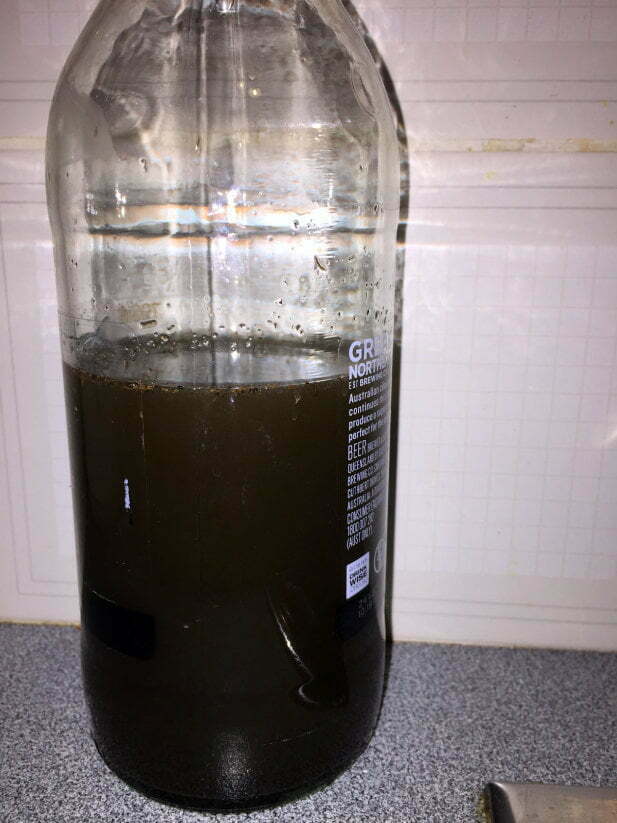
Tharwa Bridge

